Medically reviewed by
Christina J. Collura, DO, MPH
Updated March 2023
Parents often wonder about peanut allergy in babies and when to safely introduce peanut products. Recent studies have shown that early introduction, when done appropriately, may help prevent peanut allergies from developing. This represents a significant shift from previous recommendations.
One important thing new parents need to know is that the guidelines for peanut allergies changed in early 2020.
“Peanut allergy affects approximately 1 million children in the U.S. and only 1 out of 5 of these children will outgrow their allergy. Because there is no cure, allergic individuals must strictly avoid exposure to prevent severe and potentially life-threatening reactions,” said Peter Marks, M.D., Ph.D., director of the FDA’s Center for Biologics Evaluation and Research. “Even with strict avoidance, inadvertent exposures can and do occur. When used in conjunction with peanut avoidance, Palforzia provides an FDA-approved treatment option to help reduce the risk of these allergic reactions in children with peanut allergy.”
What does this mean for you, and more importantly, your child?
Contents
- New Recommendations
- When Can I Start Giving My Baby Peanut Butter?
- How to Introduce Peanut Butter
- Tips for Introducing Peanut Butter
- How to Tell If Your Baby Is Having an Allergic Reaction
- Peanut Butter Allergy Risk Factors
- Why is This Information Important?
- Frequently Asked Questions
- Peanut Allergy Management
New Recommendations for Peanut Allergies
When the National Institute of Allergy and Infectious Diseases (NIAID) introduced its updated guidelines in 2017, it was in response to a 2015 study on how peanut-containing foods influenced infants. That study is still the most recently recognized study on the subject, making NIAID’s updated guidelines from 2020 relevant today.
The changes to the National Institute of Health guidelines provide customized advice to infants depending on the risk levels for peanut allergy. All solids should be avoided until children are developmentally ready, typically at 4 to 6 months of age. Age-appropriate peanut products include peanut powder mixed in baby foods and watered down peanut butter. Thick peanut butter and peanuts are to be avoided as they are choking hazards.
- Babies with severe or persistent eczema or those with egg allergy are considered at higher risk for peanut allergy. Parents of these infants should discuss with their medical provider when and where peanuts should be introduced. Allergy testing can be helpful to guide medical advice.
- Babies at moderate-risk have milder eczema which is controlled with over the counter creams. These infants can begin peanut-based food at home at around 4 to 6 months.
- Most babies are low-risk. It is okay to introduce them to peanut-based foods with other solid foods at around 4 to 6 months of age.
When Can I Start Giving My Baby Peanut Butter?
According to the NIAID guidelines above, you can start giving your baby peanut butter when they are 4 to six months old as long as they are not at high risk of an allergy.
If you’re concerned about a potential peanut butter allergy in your baby, your allergist can perform appropriate food allergy testing before introduction. These tests should only be conducted by qualified healthcare professionals in a clinical setting where any potential reactions can be safely managed.
How to Introduce Peanut Butter to Your Baby
Introducing peanut butter to infants can be beneficial to their overall health. According to MassGeneral for Children, you could ward off your child’s development of a peanut allergy by giving them peanut butter and other peanut-based products as a baby.
Many parents ask what to look for when giving baby peanut butter for the first time. It’s crucial to understand both the proper introduction method and potential signs of an allergic reaction. The key is to start with small amounts and observe carefully.
Peanut butter also contains healthy ingredients like antioxidants, vitamin E, magnesium, fiber, protein, and potassium. The monounsaturated fats in peanut butter are good for the heart as well.
If you want to introduce peanut butter to your baby, consider watering it down with a tablespoon or two of water until it becomes more liquid-like. This will make it easier for you to feed peanut butter to younger infants, around 4 months old. The same is true of using peanut powder in lieu of peanut butter, but you can also introduce peanut butter at its regular consistency as your baby starts eating solid foods at 4 to 6 months of age.
Tips for Introducing Peanut Butter to Your Baby for the First Time
To introduce peanut butter to them for the first time, you want to make sure you have an open schedule on that day. Your baby should be in good health as well. If they’re sick with a fever or they have diarrhea, wait until another time to feed them peanut butter.
Even if it’s watered down, it’s suggested you combine the peanut butter with another food your baby can safely eat. Then, start with very small quantities. If your baby is fussy or picky, they may not be receptive to the peanut butter at first. If so, then wait until another mealtime to try again.
Once your baby does eat the peanut butter, you can feed them more if they really want it, but not immediately. Let 10 minutes elapse, during which you should stay close to your child and watch for signs of an infant peanut allergy. If you don’t notice any symptoms after 10 minutes, then give them another spoonful. If they seem uncertain if they like it, don’t make your baby eat more peanut butter at this time.
If your baby experiences any reaction to peanut butter, it’s important to know what to do immediately:
- Stop feeding immediately
- Document when the reaction started
- Take photos of any visible symptoms
- Seek immediate medical attention if symptoms are severe
- Follow up with your allergist
When your baby is finished, be close for the next two hours or longer. You want to see if they have an allergic reaction to the peanut butter, and if they do, get them medical attention immediately.
If the first instance of peanut butter consumption goes well for your baby, then continue feeding your baby peanut butter up to three times every week. Each time, they should consume about six grams, which is roughly two teaspoons.
How to Tell If Your Baby Is Having an Allergic Reaction to Peanuts
Food allergy symptoms vary depending on the person, with some being more severe than others. Here are the symptoms of a peanut butter allergy in infants that you should watch for:
- Topical reactions, such as skin rashes
- Vomiting and diarrhea
- Trouble breathing
After exposure to peanut butter, reactions typically occur within minutes to two hours. However, monitoring should continue throughout the day of first exposure, as some reactions can develop more gradually.
If your infant has a peanut butter allergy, your baby’s skin may become very pale. They could have diarrhea and/or vomiting as their body tries to expel the peanut butter or other food allergen. They may develop hives, or red, splotchy rashes on the skin. Their breathing can change, becoming more restricted as their throat swells. This may be accompanied by wheezing or sneezing.
Some food allergy sufferers even lose consciousness. If not, lightheadedness can occur, as can circulation issues.
The most severe reaction to a peanut allergy or other food allergy is anaphylaxis. This is a potentially deadly reaction that impacts heart rate, blood pressure (causing it to decrease well below its normal rate), and breathing. Only epinephrine can treat anaphylaxis, and it should be administered quickly. If you’re concerned about a severe reaction to peanut butter in your baby, speak with a physician before feeding your child peanut butter. A doctor can provide the best recommendations on when to introduce peanut butter and how you can prepare for a possible allergic reaction, including anaphylaxis.
Peanut Butter Allergy Risk Factors
While it’s possible to prevent the onset of peanut allergies through regular peanut butter consumption, that’s not true in all cases. Having a preexisting food allergy boosts the chances of later developing an allergy to peanuts.
The American College of Allergy, Asthma & Immunology or ACAAI cites the most common food allergies besides peanuts are those to soy, wheat, shellfish, fish, tree nuts, milk, and eggs. Up to 90 percent of all food allergy reactions come from one or more of these foods.
If you have a family history of food allergies, then there’s also a chance your baby may be more likely to develop these, too. In such a situation, or if your baby has a preexisting food allergy, you may want to move their first introduction to peanut butter to your doctor or allergist’s office.
Why is This Information on Peanut Allergies in Babies Important?
In September 2017, Anthony Fauci, the director of the NIAID, commented on the guidelines:
“It’s an important step forward. When you do desensitize them from an early age, you have a very positive effect.”
Today, nearly two percent of children have peanut allergies – twice the percentage found in 1997. With peanut allergies on the rise, the traditional advice to hold off feeding kids peanuts until they are three is thought to be incorrect. In fact, scientists fear following this advice may cause more children to be allergic to peanuts than if peanut-based foods were introduced earlier in life.
Dr. Matthew Greenhawt of the American College of Allergy, Asthma and Immunology, a member of the NIH-appointed panel that wrote the guidelines said:
“We’re on the cusp of hopefully being able to prevent a large number of cases of peanut allergy.”
Frequently Asked Questions About Peanut Butter Allergies and Babies
When can I introduce peanut butter to my baby?
Most babies can start having peanut-containing foods at 4 to 6 months of age, when other solid foods are introduced. However, babies with severe eczema or egg allergy should consult their healthcare provider first.
How long should I watch my baby after giving peanut butter?
Monitor your baby closely for at least 2 hours after introducing peanut butter, with special attention in the first 10-15 minutes. Reactions typically occur within this timeframe.
What are the signs of a peanut butter allergy in babies?
Signs may include hives, swelling, vomiting, difficulty breathing, pale skin, or changes in alertness. Any severe symptoms require immediate medical attention.
What should I do if my baby has a reaction to peanut butter?
Stop feeding immediately, document symptoms, and seek immediate medical attention if symptoms are severe. For mild reactions, contact your healthcare provider for guidance and follow up with an allergist.
How much peanut butter should I give my baby the first time?
Start with a very small amount - about a quarter teaspoon of thinned peanut butter mixed with baby food. Wait 10 minutes before giving more if there are no reactions.
Peanut Allergy Care and Management for Children
The U.S. Food and Drug Administration or FDA states that one million children in the country have a peanut allergy as of 2020. Most, 80 percent, will not outgrow it.
In February 2020, the FDA approved a medication from Aimmune Therapeutics called Palforzia that can treat children with peanut allergies. However, only children between four and 17 years old are eligible, so it’s important that parents make smart choices at the beginning of their child’s life and onward.
Carolina Asthma & Allergy Center is here to help you navigate these changes. Schedule an appointment now to discuss the best recommendations for your child.
Founded in 1952, Carolina Asthma and Allergy Center has become largest asthma and allergy medical practice in the metro-Charlotte area. We have multiple offices throughout the Charlotte area, and all of our physicians are board certified in allergy and immunology. Specialty areas include food allergy, drug allergy, hay fever and other pollen, mold or dust mite related allergies, venom allergy, and asthma. Call us at 704-372-7900 for an appointment or use our online inquiry form.





